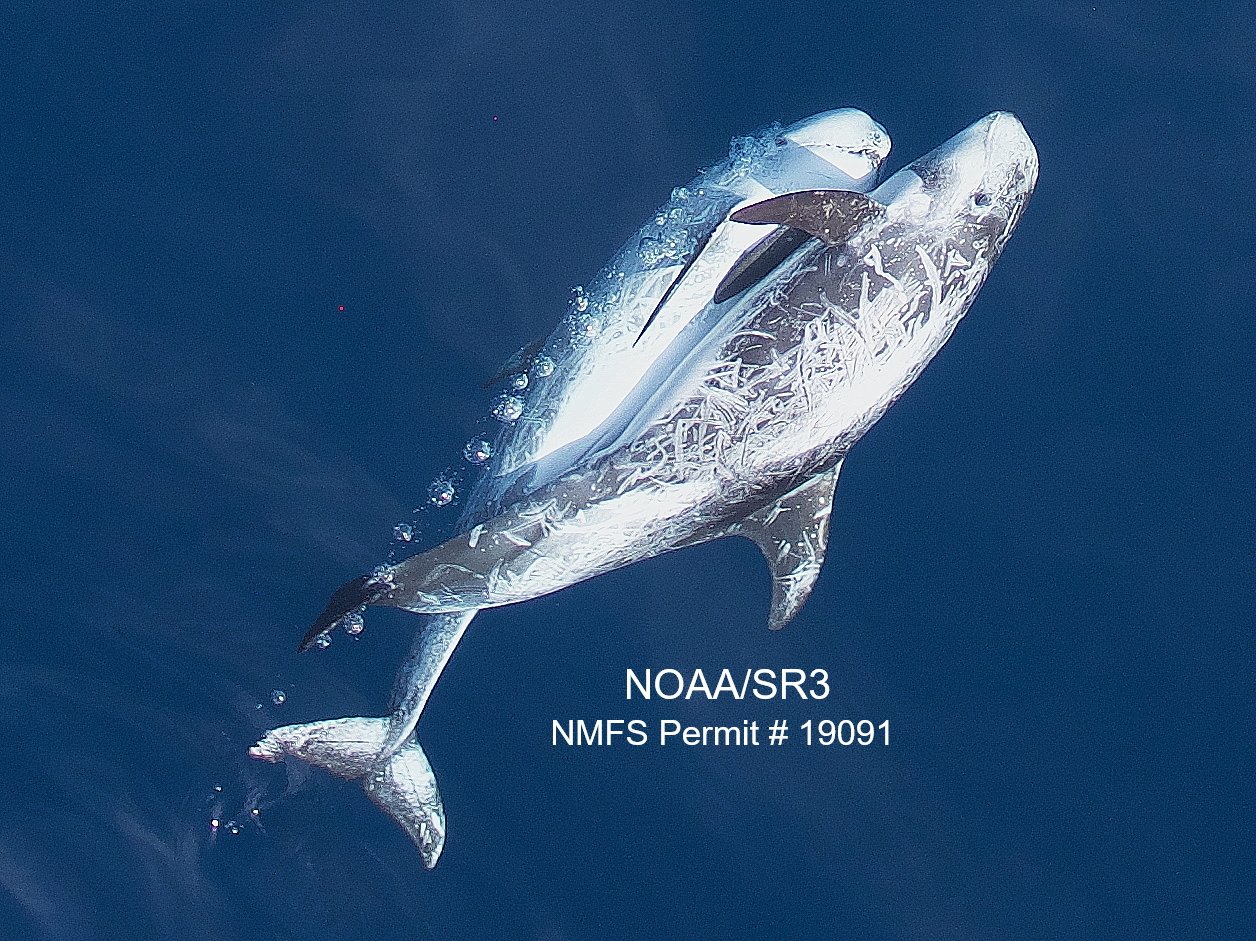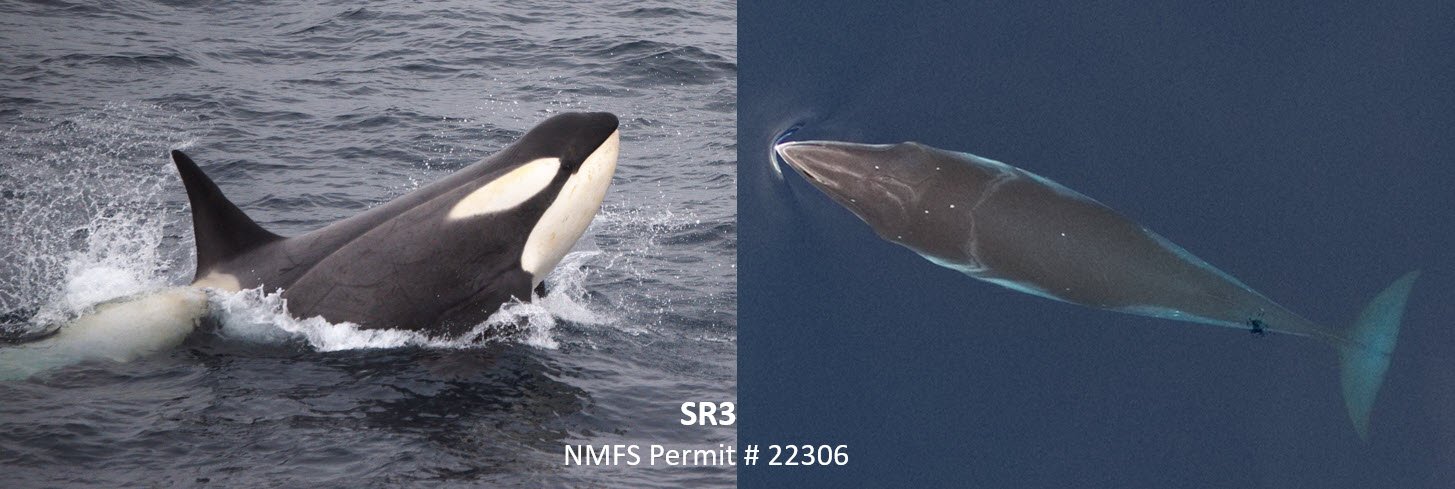By Dr. Holly Fearnbach, Marine Mammal Research Director
SR3 recently used “photogrammetry” measurements from drone images to report that several Southern Resident killer whale (SRKW) females were measured to be in late-stage pregnancy between fall 2022 and spring 2023, including some that were already expected to have given birth prior to this summer, if brought to full term. The majority of SRKW pregnancies are not successful, but we were very pleased to encounter two new calves (L126 and L127) in L pod in late June and early July. SR3’s research team of Dr. Holly Fearnbach and Dr. John Durban were able to collect aerial images of both calves and their mothers (L119 and L94, respectively), which will be measured to provide important baseline data for monitoring the body condition of the mothers and growth of the nursing calves. The successful rearing of healthy calves is essential for the viability of this endangered population, which numbers just 75 individuals. The team will continue year-round photogrammetry research to monitor the health of these vulnerable whales.
Aerial images of two new calves (left, L126; right, L127 playing with kelp) born into L pod of the Southern Resident killer whale population. Images obtained using an octocopter drone flown non-invasively >100ft above the whales under NMFS research permit 22306 in July 2023.












